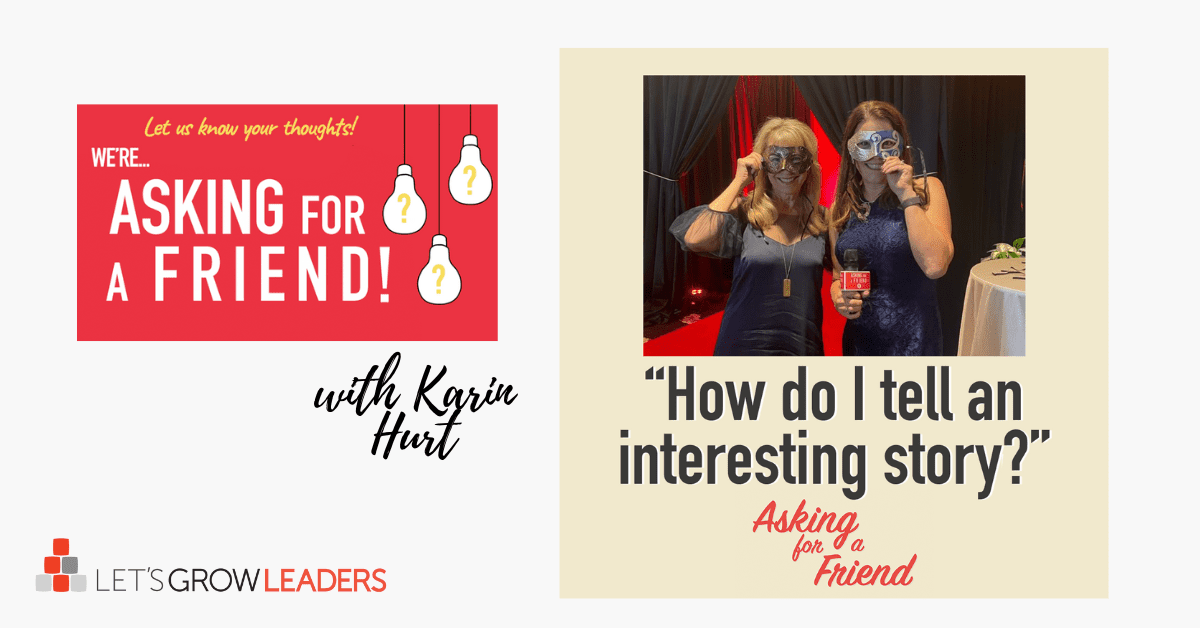Done well, strategic storytelling will make you If you want to be a better storyteller, avoid these storytelling mistakes.
Avoid These Strategic Storytelling Mistakes
You want to be a better strategic storyteller, so how do you up your game? How do you tell a memorable story that has the impact you desire?Today, I talked with Carrie Beckstrom about the most common mistakes people make when telling stories and what to do instead.
1. They are too long.
Use a storytelling framework to keep your story tight and on message. Distinguish the nice-to-have details from the must-haves.
2. They lack purpose.
Think about your audience and what you want to achieve.(I like to say what do you want your listeners to “think, do, and feel” as a result of hearing your story.)
3. They lack luster.
Use emotive language and sensory detail to keep it interesting.
More Ways to Craft a Better Story (Do THIS, Not THAT)
Do: Be clear about your message
The difference between business storytelling and telling a great story around the campfire or in your favorite bar comes down to one thing– the point.
Whether your audience is an employee in the passenger’s seat of your car on the way to an event, a small group of direct reports in a team meeting, or a thousand people at a town hall meeting, ask yourself this: “What do I want my audience to think, do or feel as a result of this story?” Be as specific as possible.
Think beyond the obvious feelings of “encouraged” or “motivated.” And consider specific behaviors or key actions you want them to take next.
Do: Pick a Relatable Scene
I can’t tell you how many corporate events we go to where the CEO starts with a story from an unrelatable setting. “When my family of five and I were on a cruise last week, the funniest thing happened…” And all the frontline workers who are struggling to make it through the month, tune out. They lost that story at hello.
Do: Keep it Tight
As Carrie recommends in the video, don’t let your story ramble. It’s tempting to offer every chronological detail and play-by-play. Don’t. Great stories focus on the emotional truth. Don’t make stuff up, but it’s perfectly okay to condense the details and the characters to build suspense, intrigue, and most importantly reinforce the point.
Do: Give Your Characters Character
Paint a picture of your characters. What did they look like? What did they wear? Why? Give us a glimpse into their fears and motivations. If you’re the main character in your story, give us a look behind the curtain. What were you feeling? Why?
D0: Check for Understanding
If you’ve been in any of our leadership programs, you know how committed we are to a solid check for understanding in every communication. After your story, instead of saying, “The reason I told you that story is…” Try, “Why do you think I share that story?” If they don’t get it, refine your story to ensure it conveys your most important message.
Don’t: Be the Hero of Your Own Story
Even if you are the hero, who else was involved? How can you emphasize their impact? And then I met __________ who had the best idea I’ve heard in a long time…
Don’t: Tell Stories Within the Story
Life is messy. No story happens in a vacuum. But, the most impactful business storytelling happens one story at a time. Do what you can to avoid the detours.
Don’t: Wing it
Great storytellers make it look easy. Like the story just came to them and off they go. The very best storytellers know there is nothing further from the truth. Becoming a great storyteller takes practice. Try out your stories in low-risk contexts, ask for feedback and keep refining.
Your turn. What are storytelling mistakes do you recommend business storytellers avoid for a better story?

